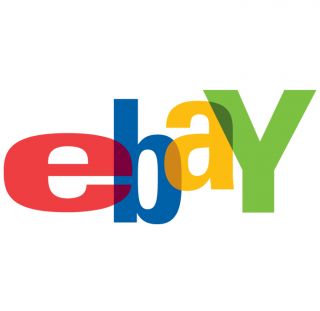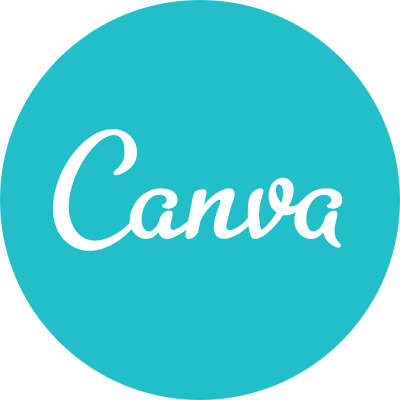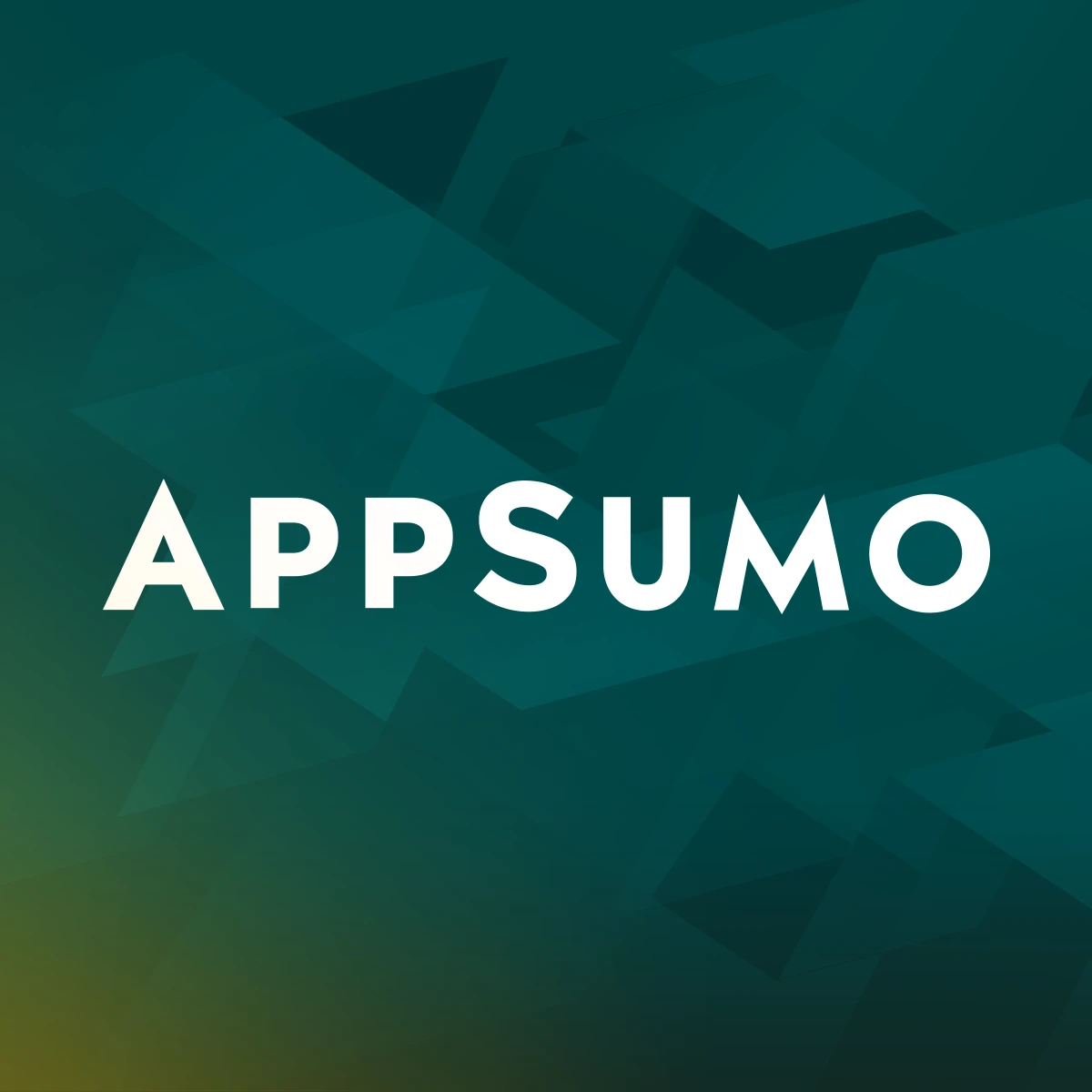I Came Home From Africa To Build A $200K/Year Sales Automation Software
Hello! Who are you and what business did you start?🔗
I’m Richard Miles, along with Laura Betterly, one of the two co-founders of CLOSEM. We developed a super-easy-to-learn-and-use software tool that helps entrepreneurs and small business owners automate the time-consuming work of following up with leads, prospects, and customers and increasing sales.
Our customers range from coaches, real estate agents, e-commerce companies, digital agencies, insurance agents, web designers, teachers, schools, candidates for public office, consultants, merchant card processing companies, photographers, video production companies, home services including roofing, solar, painting, plumbing, cleaning; as well as assisted living services, food franchisors – even one customer who makes giant statues of wooly mammoths out of recycled materials and a lady that sells healing crystals and chameleons online!
The thing they all lack is time. It takes anywhere from 6 to 16 interactions with a prospect to close a sale, and solo entrepreneurs and small business owners are so busy running their business the long hard work of closing sales often gets back-burner. And what happens then? Sales are lost. We made CLOSEM fix that.
One thing Laura and I agree on is that the best measure of our success is having happy customers. So, what do we make? We make small business owners more successful. We make entrepreneurs who aren’t naturals at sales good at it. We make people whose main skillset isn’t writing great sales copy always have something great to say.
Don’t get me wrong, we’re pro-money as well -- but we know that the key to our success is happy customers, who get value from what we offer. As long as we have that, the rest will follow.
Like all entrepreneurs, we’re crazy - crazy foolish, crazy optimistic, and crazy good at what we do. We launched CLOSEM in the middle of a global pandemic and worldwide economic slowdown. And that’s crazy. But it also turns out to be a great time to launch a business that helps other businesses succeed, especially as so many folks were looking to turn their side-hustle into full-time income or make sure their small business survived.
One effect though, as it took us longer to get up to speed, we had partners and customers who called us up and said “we’ve just sent everyone home” and we had others who simply disappeared. More so, we also had folks use CLOSEM to keep their business afloat while working remotely, and others grow their business despite the pandemic.
Meanwhile, to answer the question of what we make in terms of money, we should gross around $200,000 this year given our cautious ad spend budget. To increase our ability to raise awareness and demand, we’ve just launched a Crowdfunding campaign to raise funds to scale faster. We anticipate a higher gross as our Crowdfunding kicks in and we can ramp up our advertising spend. If that happens we should generate over $1MM this year and we’re confidently targeting $12MM next year. We’ve worked hard to get all the systems in place to support that kind of growth and have some great partnerships we can leverage to create it.
At the same time, we do get as much, if not more, satisfaction from hearing “your support is fantastic” or “we made $7,000 in our first week” or “I got my first campaign going in 20 minutes.” Or this one, which came in while I was writing this: “Thank you again for the product, I just got deposits for 7 new cities from 2 leads yesterday!”

What's your backstory and how did you come up with the idea?🔗
I started my professional career in sales, long before the internet when the number one business tool wasn’t a mobile phone, it was shoe leather. In my first year, I was awarded Salesman of the Year, and they interviewed me at the National meeting. They asked me how I was able to outsell the big-city folks in New York and Dallas and Los Angeles in my little backwater territory of Oakland, California. My answer was I followed up more. When someone told me to call back later, I did. I saw that the sales superstars were the ones who diligently followed up on every lead.
I thought “what a horrible wasted opportunity.” He has my name, my address, my cell phone, my email, and he did a great job. All he had to do was send me a note asking for a positive review on his Facebook page, or Yelp page.
I started my first business and bootstrapped a company that made systems to control energy use in high-rise office buildings, and 4 years later sold it to a Fortune 500 company (Ingersoll-Rand). I spent the next 5 years working in the Fortune 500. Managed a nationwide sales force, then left for Polaroid and managed an international sales team.
I left the Fortune 500 and started a consulting firm that provided sales and marketing services to high tech companies and sold that to an investor group 14 years later, then worked in the not-for-profit social benefit sector before moving to Africa with my wife, a physician in public health.
When we returned to the US after 8 years overseas, I was looking for a new opportunity. Two days before Thanksgiving my oven broke, with 20 people coming for dinner. The appliance repair guy came out -- nice guy, just started his business, did a great job, and left. And I never heard from him again.
I thought “what a horrible wasted opportunity.” He has my name, my address, my cell phone, my email, and he did a great job. All he had to do was send me a note asking for a positive review on his Facebook page, or Yelp page…which I would gladly have given him! All he had to do was send me a note in the Spring letting me know it was time for some maintenance and he could have had more business from me. Nada.
That was my “aha” moment. I knew I could develop a simple software solution that could make it easy for guys like my appliance repair guy to follow up and make more sales.
I reached out to my friend Laura. She and I first worked together back in the dot-com days. She had come up with a product called PCDJ that let people play two MP3 files at once and be digital DJs. Together, we were responsible for creating a user base of 8,000,000 users in a very, very short period.
Laura has always been a visionary. She saw the potential of digital music way early in the game. In the early 2000’s she saw the future of online marketing was going to be local and mobile. This was before the iPhone! She created a course called “Mobile Local Fusion” and has over 30,000 students who’ve created successful online businesses. For the past dozen years or so she’s run a successful online marketing agency.
I ran my idea by her and she loved it. She added that many of her clients couldn’t (or wouldn’t) follow up with the leads she generated. We knew this was a need that needed filling. We decided to partner up and bring this idea to the world.
Everyone needs more sales videos, watch here:
Take us through the process of designing, prototyping, and manufacturing your first product.🔗
We created a software messaging platform designed to help folks close more sales, and we called it CLOSEM. While email is still the main communication channel, we wanted a system that could bypass inbox barriers, so we added the ability to message via text. Both of us have a ton of contacts and folks we’ve done business with over the years. We shared an early mockup with a bunch of key contacts and got great feedback. Not only did people want to buy it, but a lot of them also wanted to partner with us and sell it! To further validate the idea, we offered it, while still not 100% fully baked to folks and they bought it. That’s what we advise as a real validation test -- will folks buy it, not just tell you it’s good. So we knew we were on the right track.
Both of us have had successful businesses, and we’ve both had successful exits. We’ve also raised money for companies, and we’ve each taken a company public. We didn’t want to do that initially, didn’t want external partners, and we agreed to bootstrap our fledgling venture 100%.
But neither of us has millions to invest in a new startup, and we want to grow organically. Laura’s business took a big hit in the pandemic, so she had less capital to risk, and we proceeded very slowly and cautiously. Development took longer than we wanted.
We knew we were entering a very crowded and competitive space. But we knew we had one thing no one else had -- us. I hated it when clients would tell me “we have a CRM” -- I knew most of their salespeople hated it, hated spending time on it, and usually ended up not using it. So we knew what we would create would have to be something easy to use, easy to learn, and something that would save time, not waste it. A lot of our work was making sure the system was easy and intuitive, and we cut out any useless bells and whistles.
We also had early adopters who would come up with lots of good ideas of things to add. One of the great things about the software is that it’s never finished -- you’re always iterating, always making it better. And given enough programming time, there’s pretty much nothing you can’t make it do. Listening to customers is important. But part of the art of running a software startup is also being able to say “yeah, thanks, no.” We’re not going to do that. Not because we can’t, but because the core vision is simplicity and ease of use. And things that add complexity have to be managed within that vision.
The other special sauce we added is that we are both excellent copywriters. We know that while our target customers are great at what they do, they can often get stuck staring at a blank screen trying to come up with a great message and a compelling subject line. And that alone can be enough to stop them.
So in addition to coming up with our easy-to-use software that could automate follow-up, we also came up with all the right things to say. We wrote a boatload of powerful message templates that our users can put to work right away or customize to suit, or just use for inspiration. We have messages for following up when a prospect says “maybe,” following up a webinar or trade show, asking for reviews and referrals, prospecting for new business, and more.

Describe the process of launching the business.🔗
We’re bootstrapped and self-funded using our funds. No debt and don’t want any. We designed the website ourselves.

The first thing we did was a bunch of video tutorials so folks could get up and running fast, without having to hire a team of support staff. Second thing was to put a chatbox (we use Intercom) on our website and the app so folks could get immediate help. Once that was in place, we launched via email to our lists of contacts.
We offered a hefty discount (33% off) to early adopters and got a bunch of users. We listened to feedback, saw what questions they had, made some upgrades and improvements based on feedback and requests -- things we didn’t think of that person needed and wanted. Ask folks to give us feedback and give us reviews. We needed social proof before widening the funnel.
We submitted the app to AppSumo, one of the first places we turn to for tools to grow our business. They had just launched their Marketplace and we were accepted. That felt like validation to us -- it’s one thing to have people you know or past customers buy and use your product, we felt this was a jaded team of folks who looked at software like ours every day, so getting accepted by them felt like acknowledgment from peers.
AppSumo is a deals market, and everything there is at a special price, with the fastest moving products offered on a Lifetime deal basis.
It’s easy for a lot of software as a service company to do this because, for many, the added cost of a new user is minimal. It was harder for us because our product includes messaging, and the backend costs of that can be substantial. So we came up with a plan that allowed for a limited (but still pretty great) number of messages to start with, and a discounted rate on additional messages later.
Most products offered were at the $50-$60 price point. We launched at $97. Got a decent take rate, and were in the top tier of products in the Marketplace. After some time, we raised it to $197. We were happily surprised to find out that the take rate didn’t change. We raised it again to $297. And again, the take rate didn’t change -- and in fact, the drop-off rate went down. Then we raised it again to $397 and still no change. It was an interesting test of our price point, a validation of our concept as well as a great way to get a lot of users quickly.
AppSumo customers, or “sumo-lings” as they are called, are by and large savvy tech users, and not shy about asking for what they want. As Laura puts it, some of them have sharp teeth. But others get what we’re about, and are also vocal proponents. Through AppSumo, we’ve been able to reach a much wider audience, very quickly, and with zero marketing spend. We quickly got a lot of great reviews, although a limiting factor to AppSumo reviews is that they show the AppSumo user name, not the user’s real name, so it’s a little less “real” than social proof on other platforms.

Again, launching in the middle of a pandemic created some unique challenges. We had worked hard on a potential partnership with a very large base of existing customers, only to be told “we just sent everyone home. Call back when the pandemic’s over.” This happened twice.
We launched with 3 plans and no free trial. We wanted to test acceptance and see what price point people gravitated to. We also felt that since we priced our entry-level plan so low, people could try it for a month and then cancel without a massive investment. Interestingly, almost no one took the lowest-priced plan -- most gravitated to the higher-priced plans with greater messaging limits.
We’re now in the process of launching an updated website and new (higher) price points, and we now offer a 21-day free trial.
One of the biggest lessons we learned (and have to keep learning) is to stay focused. We have a very small team, and we’re all juggling multiple tasks. I’m trying to find time to publish more videos on ways you can use CLOSEM to increase your response rate, build brand awareness, and others.
One of the other big lessons we came away with is that our product is so complete there isn’t that much we can add to it to create additional revenue. We’ve been asked to offer a dumbed-down version as a way to build a larger user community, but we aren’t willing to offer less.
Since launch, what has worked to attract and retain customers?🔗
We put customer service first and foremost, and that’s meant many other potential opportunities have had to take a back seat. We haven’t wanted to outsource our support -- much better to get hands-on with actual customers from the beginning and find out what they’re doing and how they’re using the product. We’re proud of our 5-star rating on support, and I’d advise any other founder to spend time down in the weeds talking to customers until they understand them. Only then can you hire other folks. This has been our best form of word of mouth. I highly recommend this to other founders.
The worst thing we see marketers do is hammer the same nail over and over. If you’ve hit the nail once, put another one in and strike that.
Laura’s genius at social media marketing and generating traffic. We haven’t spent more than a few thousand dollars overall on it, but what we’ve spent has worked well.

Facebook promo ad: watch it here:
Of course, we use our product for customer follow-up. New and trial users get a solid series of follow-up messages. This is part of our art, and we’re going to start offering a MasterMind group to share best practices. Because we provide a platform where you can send a series of messages if you are telling the same thing again and again, you don't increase success, you decrease it. As a result, we'll share what to do and how to do it with members of our MasterMind group, thereby becoming an additional income source for us. The worst thing we see marketers do is hammer the same nail over and over. If you’ve hit the nail once, put another one in and strike that.
Our series of messages to follow up with new users is a welcome message and an invitation to attend a demo session. The second offers an easy-to-implement example of how someone is using CLOSEM to boost response. The third asks if they’ve launched their first campaign yet and another invitation to a demo. The next is a case history. Each has a different subject line and offers something of value. That’s one way we keep customers engaged.
We’ve also seen folks with the best intentions get started and then stall. We’ve made this as easy as we can, but some customizations and integrations do take a bit of time. And a very common comment from users is “I’m not a techie.” So we’ve also offered a Done-For-You service to help folks get results quickly. This is yet another income stream and a way to jump-start user success.
How are you doing today and what does the future look like?🔗
The business continues to organically increase month over month. We have some stellar partnerships moving out of the planning stages into the actualization stage. At the same time, we want to grow faster than our self-funding allows us, and we decided to do a crowdfunding raise. This is a great fundraising avenue that opened up for entrepreneurs in 2015, and we’ve done all the legal legwork to make this happen. We moved from an LLC to a C Corp, had our financials audited, and did all the necessary filings with the SEC. Time-consuming, and time away from focusing just on sales growth, but worth it.

We're just now in the process of updating our website. We've increased the prices and upgraded our plans and radically upgraded the selling messages on our site.

We also have many many more user testimonials and we've wanted to get more of that social proof on our website for a long time.

We've moved to a new shopping cart system (SamCart) that we think is smoother and has fewer steps than our previous one. We think that will result in less cart abandonment and more sales.
We've also just instituted a free trial offer, which we had not done in the beginning. We had gone with the philosophy that if somebody wants to try CLOSEM they would be willing to pony up a few dollars to give it a shot since they can cancel on a month to month basis, but we've decided to test a free trial offer to see if it gets people up using the product, interacting with us on a customer service level, getting their first lists and their first campaigns going, and based on competitor research we think our conversion rates will be great.

We've also started testing some new lead magnets. For example, “One simple hack to double your email open rate.” Of course, the call to action is the CLOSEM free trial.
We have plans to advertise on YouTube with a series of great instructional content to expand our footprint on what we feel is primarily an overlooked marketing channel. We suspect this might be much less expensive and potentially more effective than Facebook and other social media.
Recently, we’ve brought on some more folks to expand our development team. Being such a small team, finding the right fit is important not only for technical skill levels, but for the company's ethics, culture, enthusiasm, and everything that goes into building a good core team.
Our preferred method of outsourcing is to work with people that we have worked with before, and we're not looking to build a 1000-person company (at least not right now), but rather to keep very lean and nimble. Our company is focused on revenue growth and so far we have reinvested everything back into the business to continue scaling.
There's an old saying that says startups don't need employees, they need heroes. That's the case with us as both Laura and myself are juggling 75 different roles within the company and work hard to stay on track and keep our focus. Someday we may cut back to a more reasonable 100-hour workweek, ah dreams!
On a product level, we are busy adding new features to the core product while we are building the next-generation version. One of the things that had slowed us down a little bit as we put all our effort into building the next generation, and it's taking us longer to get that to market than we had hoped. So we've now moved some of our resources back to putting those new features into the existing version. We have several things in development that we believe are going to be radical game-changers. I'm not going to talk too much about it until we release it, but it’s going to expand communication channels for our customers in their ability to reach cold leads, warm up old leads, and reactivate past prospects. Total game changer.
Our core customer base is in the US and Canada, but we also have users in the UK, the European Union, and Australia, with a few scattered around South Africa and a couple of other places. The key issue with a worldwide service is two-fold. First is the cost of text messaging transmission. The costs outside of the US and Canada are dramatically higher than it is in North America, with some areas being as much as 40x higher than in the US. Secondly, every country has different rules and regulations regarding text messaging. We need to be sure that legally we adhere to other country’s policies for email, text, and voice messaging. We're starting to beta test with international users using a credit system that we believe will solve that problem. There is a huge opportunity outside of the US. There isn’t as much competition, and we could be the first to market in a lot of countries.
Through starting the business, have you learned anything particularly helpful or advantageous?🔗
Never give up.
There is always a solution.
Get enough sleep.
And you never know where the next opportunity will come from.
What platform/tools do you use for your business?🔗
In terms of keeping up with our leads, prospects, and customers:
- #1 CRM for us is, of course, CLOSEM.
- #1 messaging platform is, of course, CLOSEM. Leads and customers go automatically into the system -- welcome messages, requests for reviews and referrals, sales follow-up, webinar reminders, and other follow-up campaigns are automated and hands-free.
- We’re remote so Slack has been great for keeping the team in touch.
- Zoom has been great for doing product demos and customer service.
- Clickup is great for project management and keeping our million to-do tasks handled.
- SamCart is the best shopping cart on the planet, and we love it.
- Zapier works great to integrate all sorts of tools into CLOSEM.
- Leadpages
- Elementor
- Typeform
- Istock Photo
- Canva
- Adobe Suite
- Camtasia
What have been the most influential books, podcasts, or other resources?🔗
I listen to Dan Martell, Brian Moran, Noah Kagan, and Neal Patel. Laura works with Perry Belcher, Mike Filsaime, Derek Gehl, and others so has the benefit of asking their advice directly. Her #1 marketing book is the old school The 22Immutable Laws of Marketing by Al Ries and Jack Trout.
Advice for other entrepreneurs who want to get started or are just starting out?🔗
I think the number one mistake coming from a sales point of view is entrepreneurs create a product, and then they offer it with the features first, as in “here’s our product, here's what it does, here's this other thing that it does, and here's another thing that it does,” rather than “here's the problem this solves, here's the benefit of solving that problem, and here's what happens when that problem gets solved.”
The other big sales mistake that I see people make is going for the close too early. I'll have calls with people that want to offer me something, and I'll listen to the pitch and then they jump to “are you ready to buy?” Often, no, I’m not ready to buy, I need to think about it, I need to be nurtured, I need to walk through this process a little bit longer, and then I might be ready to buy. And the corollary to that mistake is that most of them don’t follow up at all, or make one lame effort to follow up. THAT’S WHY WE MADE CLOSEM!
There is an art to listening to customers and knowing when they're ready to buy as opposed to trying to push a product on them. And leading them through a process of letting them decide whether the product or service is worth it to them. If it is, they'll buy it. I feel that selling is much more of a process of educating potential customers than the classic meme of “pushing” or “hard selling” a product at someone.
It’s about building relationships. In a way, it’s a lot like dating. You ask someone to come home with you too soon, and you might end up with a slap in your face and they’ll never pick up the phone again. If you build the relationship and establish trust, everything else develops naturally.
Another thing I see from a marketing perspective, especially doing these drip campaigns that our product allows you to do is lazy writing. A few times, a customer has come back to me and said “I'm not getting that 40-50% open rate that you are -- there’s something wrong with your product.” Then I look at what they're doing, and it's not our product, it's just that they're sending the same message over and over and over again -- often with even the same subject line. There’s nothing worse than a bad subject line. Doesn’t matter how great your message is if it doesn’t get opened. There is an art to good copywriting, and while we’ve populated CLOSEM with a lot of great messages, you still need a small bit of skill.
I encourage people - especially founders - to spend the time and continue to learn and pick up skills. Both Laura and I have been in business longer than we care to admit but we are learning new things every day. We're constantly working to improve our skills -- even though we have been mentors and gurus to other people. It isn't about having “40 years of experience” which is one year of experience repeated 40 times or really, truly having 40 years of experience where each year you've learned more than the year before. So I encourage any founder to spend a big portion of their time picking up new skills and listening to others.
Where can we go to learn more?🔗
If you have any questions or comments, drop a comment below!

Download the report and join our email newsletter packed with business ideas and money-making opportunities, backed by real-life case studies.

Download the report and join our email newsletter packed with business ideas and money-making opportunities, backed by real-life case studies.

Download the report and join our email newsletter packed with business ideas and money-making opportunities, backed by real-life case studies.

Download the report and join our email newsletter packed with business ideas and money-making opportunities, backed by real-life case studies.

Download the report and join our email newsletter packed with business ideas and money-making opportunities, backed by real-life case studies.

Download the report and join our email newsletter packed with business ideas and money-making opportunities, backed by real-life case studies.

Download the report and join our email newsletter packed with business ideas and money-making opportunities, backed by real-life case studies.

Download the report and join our email newsletter packed with business ideas and money-making opportunities, backed by real-life case studies.



























